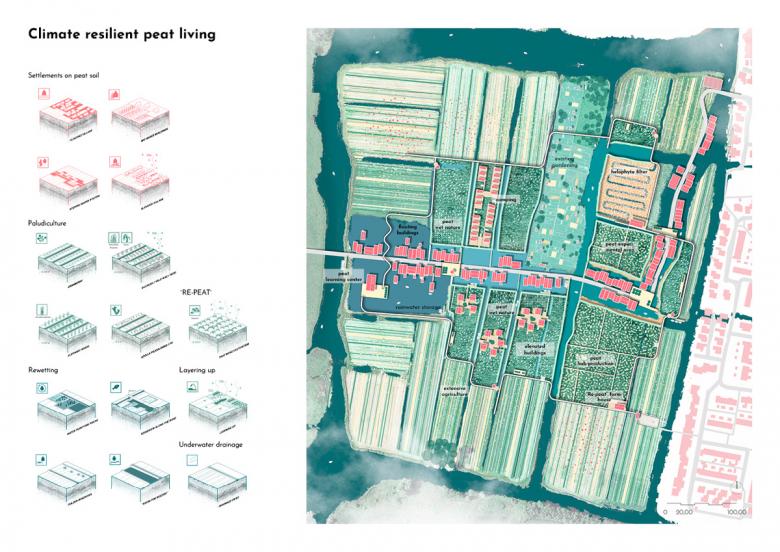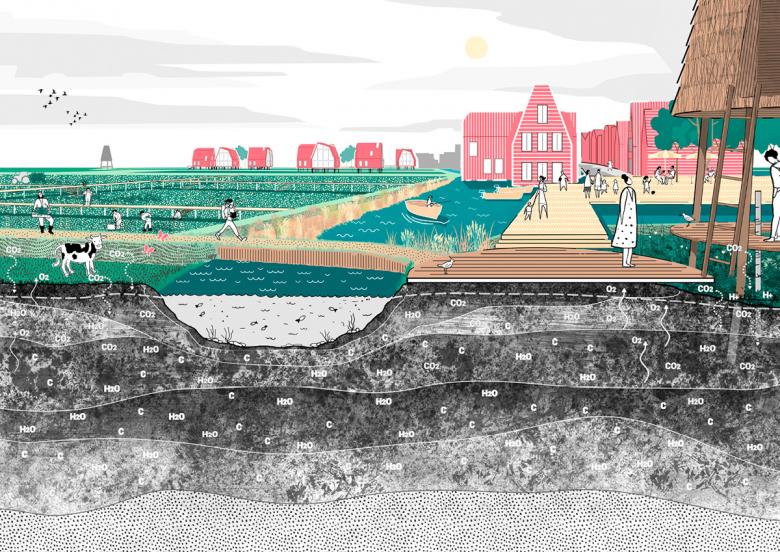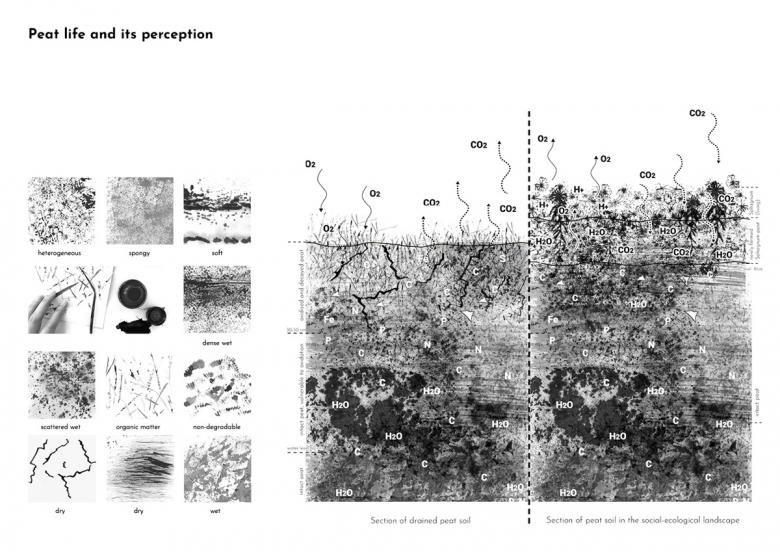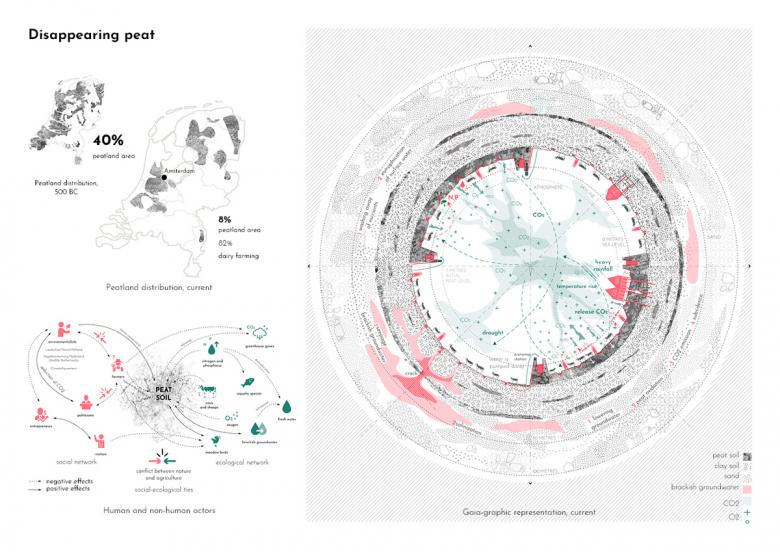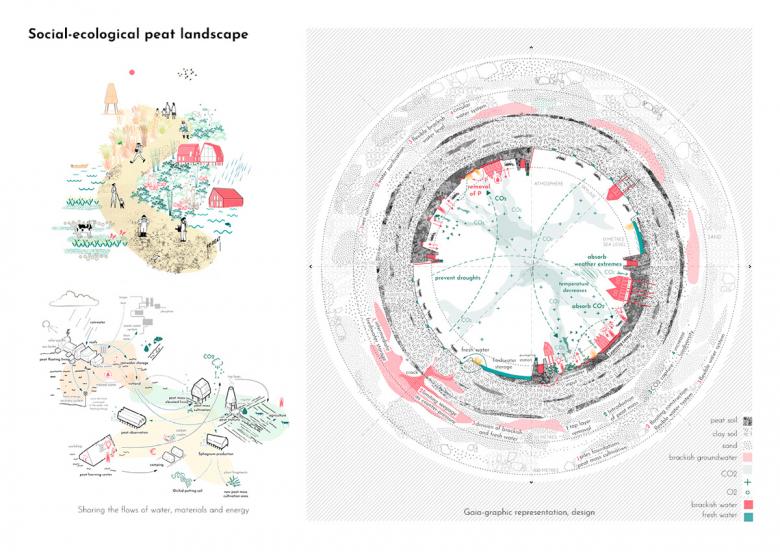Re-peat
Back to Projects listProject Location
De Rijp, Netherlands
Topic
Landscape Regeneration Agriculture, Ecological
Program
Landscape Gardens & Parks, Regeneration
Different Futures for the Peat Polders as Social-Ecological Landscape in the Netherlands
The project showcases design strategies for peat polders, focusing on settlement areas affected by intensive agriculture usage and lowered water level. It offers a broad framework to transform these areas into social-ecological landscapes while mitigating the harmful impacts of peatland drainage.
Peatlands are very valuable ecosystems on Earth and an accumulation of biodiversity. They cover only 3% of the land area but contain more carbon than all forests combined. Degraded peatlands significantly contribute to climate change, with greenhouse gas emissions of 5% globally (Jurasinski, 2020). Peat polders in the Netherlands suffer from urbanization and subsidence. Peatland drainage is responsible for a large portion of agricultural emissions in the country, building damage, biodiversity loss, and flood risk. Balancing the need for settlement development and peatland preservation is a major challenge, further complicated by conflicts between sustainability goals and dairy farmers.
The social-ecological systems approach was used as a theoretical framework, focusing on the interactions between natural and human processes in order to create a sustainable peat polder landscape. It succeeds in an integrated description of the study area and the synchronous development of design strategies for both, the peatlands and the settlements, and also for the material exchange processes taking place between them. The water system links the social-ecological systems by connecting the water infrastructure of the building and the water system for peat moss development. Peat soil links them as well, providing areas for nature, agriculture, living, and production. In the design face, the social-ecological system components develop an integrated concept for a climate-resilient new neighborhood. Coexistence is enabled by adapted, soil-friendly construction methods (e.g., floating and elevated houses), the establishment of different marsh-tolerant crops (e.g., paludi), and targeted stormwater management. Supplemented by public-relations facilities such as a community center, the ridge walking path, and observation platforms, the proposal takes on the character of a model village. Building houses on peat is perceived as mainly a threat, but it can also be an opportunity. This will have a beneficial impact on social-ecological systems and could become the main economic driver of land use. In general, this results in a design plan with significantly reduced greenhouse gas emissions, increased biodiversity and spatial experiential value, and a high income for farmers. Additionally, renewed peat growth can stop centuries of subsidence caused by agricultural use. A thick peat package retains rainwater, preventing subsidence and effectively sequestering carbon. Through its cross-scale architectural-open space planning treatment and especially the design-integrated material exchange processes, the work provides an innovative and convincing approach for an integrated, climate-sensitive spatial development of the peat polder landscapes.
